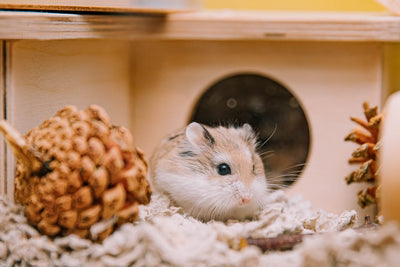Reptiles are unique animals that require specific care. One of the most important aspects of their care is their lighting. Lighting is particularly important because reptiles need the right kind of light to regulate their metabolism, digestion, and overall health. But for someone new to owning reptiles, it can be overwhelming to learn about different types of lights and what they do. One question that many new reptile owners ask is: Is a basking light the same as a UVB light?
A basking light produces heat and light, mimicking the sun's warmth and light that reptiles would get in their natural habitat. It typically sits on top of the enclosure, above the basking spot, and is used to create a temperature gradient within the enclosure. A gradient is essential for reptiles, as it allows them to move around and regulate their body temperature throughout the day. Basking lights can vary in wattage depending on the species of reptile and the size of the enclosure. However, basking lights do not provide UVB.
UVB lighting is essential for the health of reptiles because they need it to synthesize vitamin D3. Vitamin D3 is necessary for the absorption of calcium, and without adequate amounts of calcium, reptiles can develop metabolic bone disease, which can be fatal. UVB lights are necessary for reptiles that require a lot of sun exposure in their natural habitat, such as desert-dwelling reptiles. In an enclosed environment like a terrarium, reptiles may not have access to sunlight, so UVB lighting takes its place.
So, while both a basking light and a UVB light may look the same and emit heat and light, they serve different purposes. As mentioned earlier, basking lights produce heat while UVB lights provide the necessary UVB wavelength for reptiles to synthesize D3.
When selecting a UVB bulb for your reptile, it is important to choose the right type of bulb that corresponds with your reptile's needs. Some bulbs are more intense than others, which can cause eye problems if not used correctly. It's also important to note that UVB bulbs need to be replaced every six to 12 months, as they decrease in strength over time.
If you're not sure if you are providing the right lighting for your reptile, it's best to consult with a veterinarian or a knowledgeable reptile store employee. They will be able to help you select the right lighting and ensure that you are providing the best care for your reptile.
In conclusion, basking lights and UVB lights are not the same thing, and both are crucial for a reptile's health and well-being. While basking lights create a temperature gradient in the enclosure, UVB light is necessary for the synthesis of vitamin D3. It is important for reptile owners to understand the difference between the two and to provide their reptiles with the correct lighting for their species. By doing so, owners can ensure that their reptiles are healthy and thriving.






